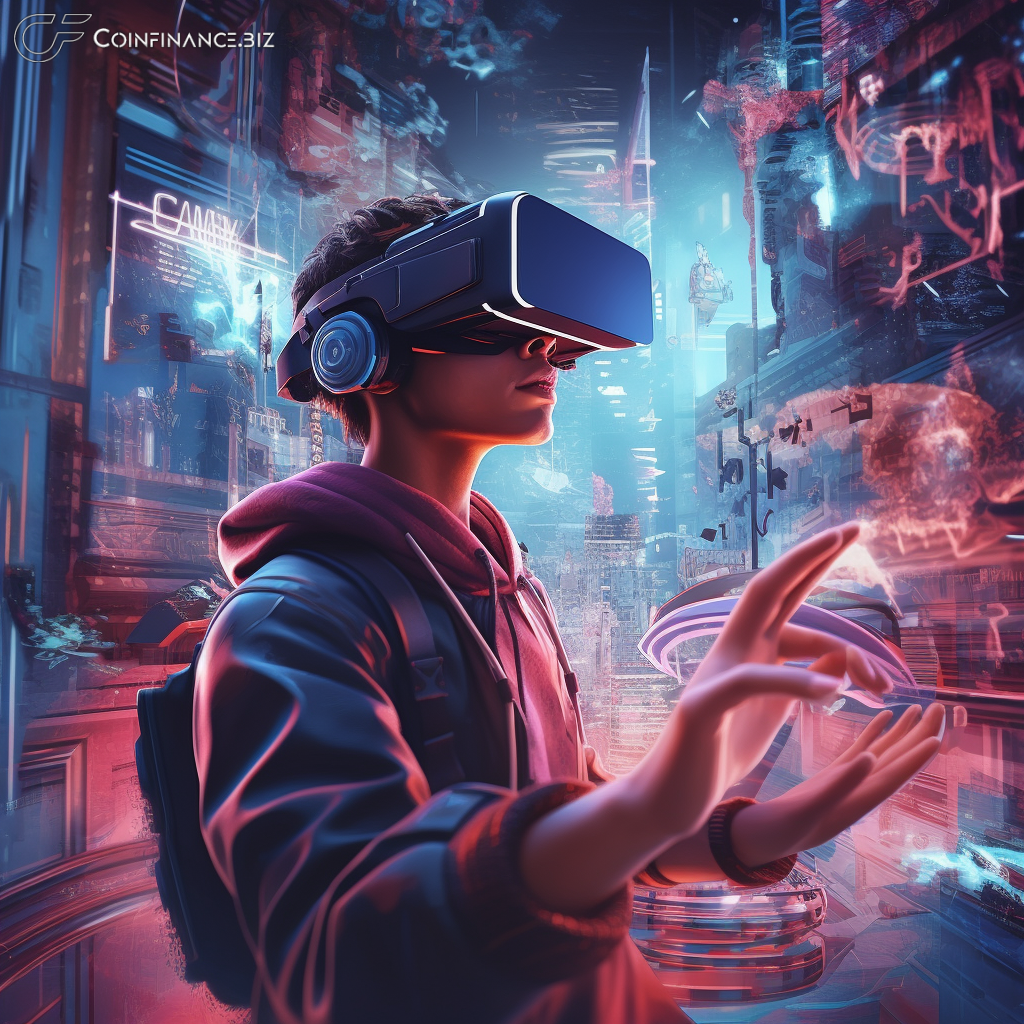In the realm of Non-Fungible Tokens (NFTs), two-dimensional artworks such as images, music, and videos have traditionally taken center stage. However, the landscape is rapidly evolving with the advent of immersive technologies like Augmented Reality (AR) and Virtual Reality (VR). Immersive NFTs are paving the way for entirely new experiences in the metaverse, allowing users to interact and engage with content in unprecedented ways. This article explores the concept of immersive NFTs, their potential applications, and the transformative impact they have on digital ownership.
Immersive NFTs: Bridging the Physical and Digital Realities
Immersive NFTs serve as bridges connecting the physical and digital realms, offering a unique blend of tangible and virtual experiences. By leveraging AR and VR technologies, these NFTs transcend the limitations of traditional digital artworks, elevating the concept of digital ownership to new heights. They play a pivotal role in the development of metaverse applications and enable users to delve into immersive worlds.
AR and VR: Distinct Technologies with Unique Applications
Although both AR and VR contribute to the emergence of immersive NFTs, it is essential to distinguish between these two distinct technologies. Augmented Reality (AR) overlays digital content onto the user’s physical environment, fostering interactive experiences. On the other hand, Virtual Reality (VR) transports users into entirely virtual environments, detached from the physical world. While AR applications are easily accessible through smartphones, tablets, or AR-enabled websites, VR experiences necessitate the use of headsets like the Oculus Rift.
Immersive NFTs Powered by AR: Expanding Artistic Possibilities
AR technology has gained popularity in the realm of art NFTs, enabling artists to merge physical and digital elements seamlessly. Notable examples include Pascal Boyart, who incorporated a QR code in one of his street murals to receive Bitcoin donations. By leveraging AR, Boyart connected the physical world of his artwork with the digital realm, facilitating seamless interactions between art lovers and the artist.
Another artist, Marc-o-Matic, combines traditional art with immersive technologies to captivate audiences through engaging storytelling. Visitors to physical art galleries can now enjoy interactive stories on tablets or smartphones, augmenting reality and creating an immersive experience.
Immersive NFTs also find practical applications in the fashion industry. Virtual try-on applications merge fashion NFTs with AR technology, empowering consumers to make informed purchasing decisions. Companies create realistic 3D models of their products, offering virtual try-on capabilities. For instance, Kivisense introduced a virtual try-on NFT sneaker that allows consumers to experience wearing wearable NFTs using AR. This technology can be extended to other product categories such as jewelry, expanding the possibilities of immersive NFTs. DressX, a company built on the concept of digital-only fashion, utilizes AR technology to enable users to try on virtual wearables, providing a sustainable alternative to physical clothing production.
Additionally, any AR experience familiar to social media users, such as face filters and world lenses commonly found on platforms like Instagram and Snapchat, can be transformed into immersive NFTs, further diversifying the range of applications.
Immersive NFTs Powered by VR: Unleashing Infinite Potential
VR technology empowers the creation of VR-ready NFTs, allowing them to find a place within virtual worlds built on blockchain networks. VR NFTs transcend the confines of the physical world, opening up infinite possibilities for asset representation, both real and imaginary.
In the gaming industry, for instance, in-game NFT items designed as VR-ready from inception can incorporate emerging technologies like Artificial Intelligence (AI) and dynamic NFTs. This amalgamation fosters the development of immersive experiences limited only by the creator’s imagination.
The domain of 3D product modeling also finds substantial utilization in the virtual world, extending beyond art. Architects and interior designers, such as the esteemed Andrés Reisinger, create surreal furniture items as VR-ready NFTs. These creations can be seamlessly placed within virtual realms like Decentraland, blurring the boundaries between the physical and virtual environments.
VR technology is also instrumental in the field of digital sculpting. Joshua Skirtich sculpted his Jenesis collection in VR, merging it with AR to provide an unparalleled viewing experience for visitors to the Guggenheim museum. The combination of VR and AR allows for a more immersive and interactive encounter with digital sculptures, enriching the overall experience.
Final Thoughts: Redefining Digital Ownership and the Metaverse
The emergence of immersive NFTs signals the beginning of a new era in the digital world. By harnessing the capabilities of AR and VR technologies, these NFTs blur the line between our physical and digital realities, enriching the metaverse with novel and interactive experiences. As the immersive NFT landscape continues to evolve, we anticipate further innovations that will redefine digital ownership and revolutionize the way we interact with the digital world. The future of the metaverse holds limitless possibilities, and immersive NFTs will play an integral role in shaping this remarkable journey.
